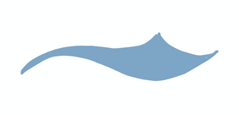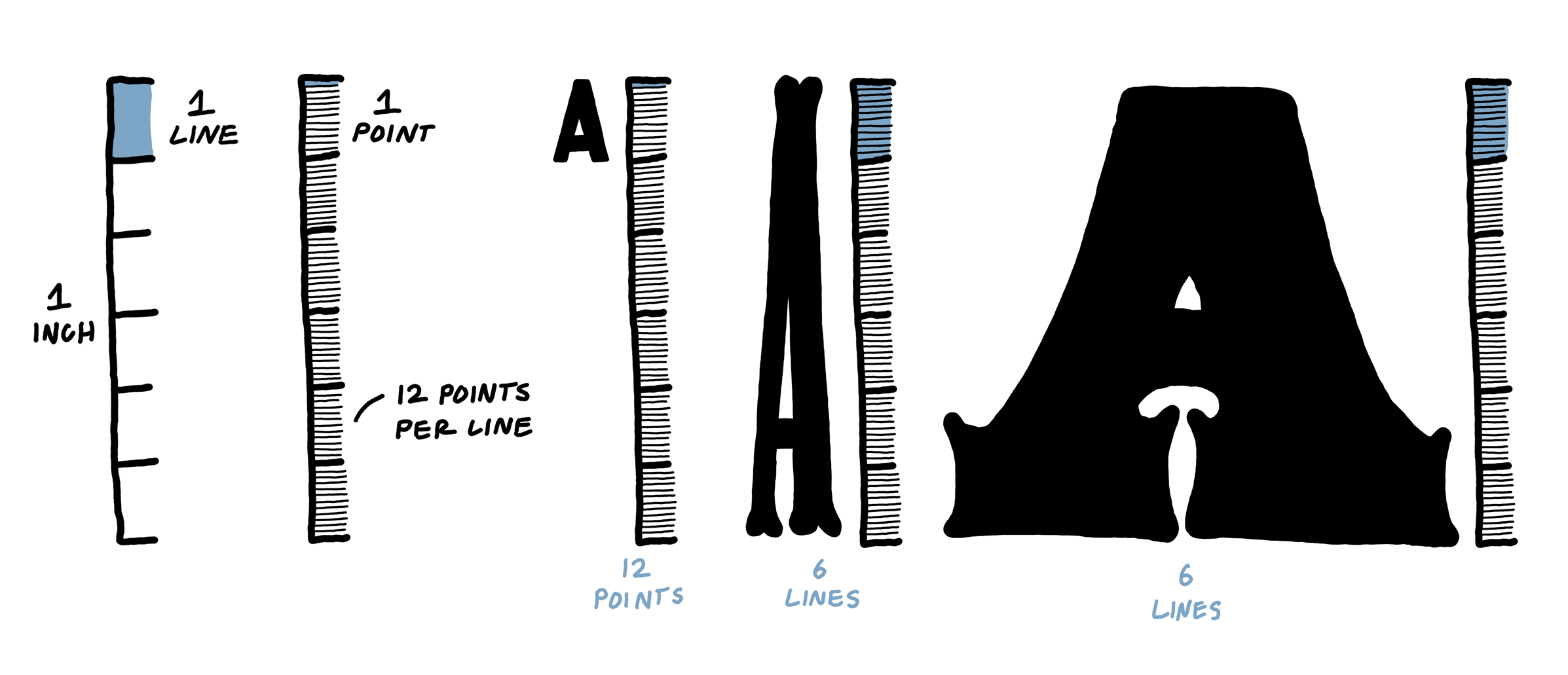Type Tools
A collection of information and resources to support your wood type journey!

Type & Scale
Type-high is the standard unit utilized for letterpress equipment. All wood and metal type has been manufactured to be a specific height. In the United States, that height is 0.918 inches. That’s 918 thousandths of an inch!

Line height is the measurement system used for wood type, which indicates the characters’ dimension from top to bottom, including ascenders, but not descenders. Line height has no correlation with width of the character, which varies drastically across the type collection. See diagram above to understand line height.
Glossary
The Design Lab has compiled multiple definitions and terms to help simplify usage of the letterpress machines as well as the wood type.
Letterpress Printing Terms

- Letterpress printing is a relief printing process, which involves a surface being coated with a layer of ink and then pressed onto a substrate (i.e. paper, fabric, or wood). Often relief printing involves a carved surface, where material is removed so that a shape or image stands out from the background of its material. The raised portion collects ink, and then is able to stamp that ink onto a surface.
- Wood type is mechanically produced movable type made out of wood.
- Points & Lines (a.k.a. Picas) are units of measurement used for type design and letterpress furniture. There are 12 points in a line and 6 lines in one inch. One line is approximately 1⁄6 of an inch. Lines and picas are interchangeable terms, but lines are commonly used with wood type.
- Line height is the measurement system used for wood type, and indicates the characters’ dimension from top to bottom, including ascenders, but not descenders. Line height has no correlation with width of the character, which varies drastically across the type collection. See diagram above for understanding line height.
- Press bed is the surface of the press where the printing-plates or metal and wood type are placed for printing.
- Tympan is the paper surface beneath your printing paper on the printing press. On a cylinder press, the tympan is wrapped around the cylinder, and contains the packing.
- Packing is stacked material of varying thickness which is added to create more or less of an impression while printing. Packing is calculated in thousandths of an inch.
- Furniture is standard sized wood blocks used to form a composition by securing type or printing blocks in specific locations.
- Leading is spacing that is used primarily between lines of type so termed because it is actually composed partially from lead. Leading is measured in thickness by point size, and length by picas. Despite the name, we also use leading to adjust kerning (spacing between letters) and other small composition adjustments.
- Thins, brasses, and coppers are small spacing materials used for finer spacing, mostly paired with metal type.
- Quoins (sounds like “coins”) are expandable inserts that tighten furniture and leading against type or blocks to keep them secure on the press.

